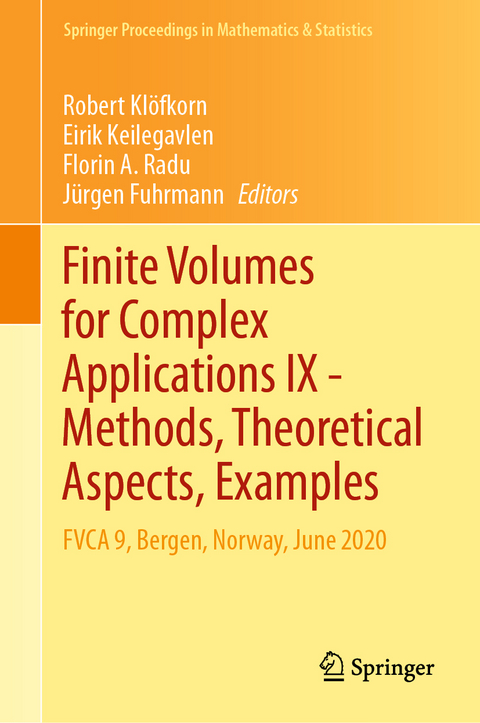
Finite Volumes for Complex Applications IX - Methods, Theoretical Aspects, Examples
Springer International Publishing
978-3-030-43650-6 (ISBN)
The proceedings of the 9th conference on "Finite Volumes for Complex Applications" (Bergen, June 2020) are structured in two volumes. The first volume collects the focused invited papers, as well as the reviewed contributions from internationally leading researchers in the field of analysis of finite volume and related methods. Topics covered include convergence and stability analysis, as well as investigations of these methods from the point of view of compatibility with physical principles. Altogether, a rather comprehensive overview is given on the state of the art in the field. The properties of the methods considered in the conference give them distinguished advantages for a number of applications. These include fluid dynamics, magnetohydrodynamics, structural analysis, nuclear physics, semiconductor theory, carbon capture utilization and storage, geothermal energy and further topics. The second volume covers reviewed contributions reporting successful applications of finite volume and related methods in these fields.
The finite volume method in its various forms is a space discretization technique for partial differential equations based on the fundamental physical principle of conservation. Many finite volume methods preserve further qualitative or asymptotic properties, including maximum principles, dissipativity, monotone decay of free energy, and asymptotic stability, making the finite volume methods compatible discretization methods, which preserve qualitative properties of continuous problems at the discrete level. This structural approach to the discretization of partial differential equations becomes particularly important for multiphysics and multiscale applications.
The book is a valuable resource for researchers, PhD and master's level students in numerical analysis, scientific computing and related fields such as partial differential equations, as well as engineers working in numerical modeling and simulations.
Part I Invited contributions : Jerome Droniou, Interplay between diffusion anisotropy and mesh skewness in Hybrid High-Order schemes.- Mária Lukácová, K -convergence of finite volume solutions of the Euler equations.- Sandra May, Time-dependent conservation laws on cut cell meshes and the small cell problem.- Alessio Fumugalli, Anna Scotti, Reactive flow in fractured porous media.- Marianne Bessemoulin, Claire Chainais-Hillairet, Hélène Mathis, Numerical schemes for semiconductors energy-transport models.- Part II Theoretical aspects : Reviewed contributed papers on convergence, stability analysis, and other related topics.- Part III Examples : Reviewed contributed papers.
| Erscheint lt. Verlag | 10.6.2020 |
|---|---|
| Reihe/Serie | Springer Proceedings in Mathematics & Statistics |
| Zusatzinfo | XV, 775 p. 184 illus., 146 illus. in color. In 2 volumes, not available separately. |
| Verlagsort | Cham |
| Sprache | englisch |
| Maße | 155 x 235 mm |
| Gewicht | 1594 g |
| Themenwelt | Mathematik / Informatik ► Informatik ► Theorie / Studium |
| Schlagworte | 65-06, 65Mxx, 65Nxx, 76xx, 78xx,85-08, 86-08, 92-0 • 65-06, 65Mxx, 65Nxx, 76xx, 78xx,85-08, 86-08, 92-08 • conservation and balance laws • cut-cell methods • drift-diffusion equations • Entropy Methods • finite volume schemes • fluid- and aerodynamics • Fractured porous media • High Performance Computing • incompressible flows • Numerical analysis • Open Source Software • shallow water equations |
| ISBN-10 | 3-030-43650-0 / 3030436500 |
| ISBN-13 | 978-3-030-43650-6 / 9783030436506 |
| Zustand | Neuware |
| Haben Sie eine Frage zum Produkt? |